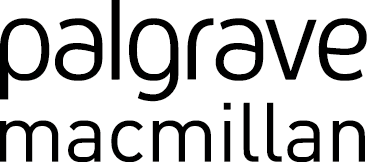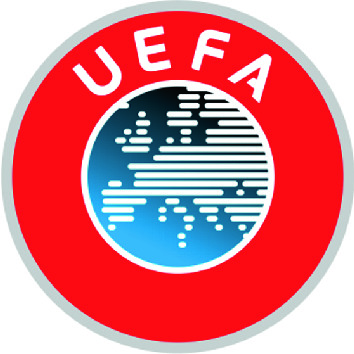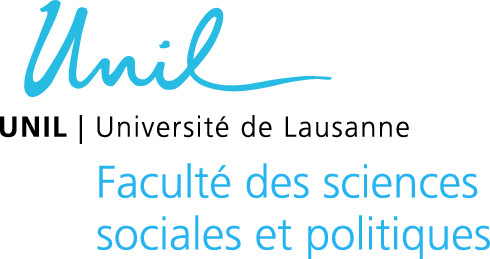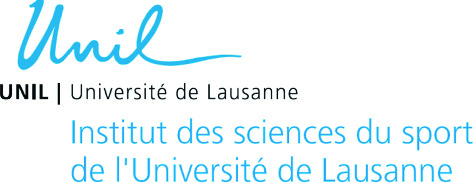This series publishes monographs and edited collections in collaboration with a major EU-funded FP7 research project ‘FREE’: Football Research in an Enlarged Europe. The series aims to establish Football Studies as a worthwhile, intellectual and pedagogical activity of academic significance and will act as a home for the burgeoning area of contemporary Football scholarship. The themes covered by the series in relation to football include, European identity, memory, women, governance, history, the media, sports mega-events, business and management, culture, spectatorship and space and place. The series is highly interdisciplinary and transnational and the first of its kind to map state-of-the-art academic research on one of the world’s largest, most supported and most debated socio-cultural phenomenona.
Editorial Board
Richard Giulianotti (Loughborough University, UK)
Kay Schiller (Durham University, UK)
Geoff Pearson (Liverpool University, UK)
Jürgen Mittag (German Sport University Cologne, Germany)
Stacey Pope (Durham University, UK)
Peter Millward (Liverpool John Moores University, UK)
Geoff Hare (Newcastle University, UK)
Arne Niemann (Johannes-Gutenberg University Mainz, Germany)
David Goldblatt (Sports writer and broadcaster, UK)
Patrick Mignon (National Institute for Sports and Physical Education, France)
More information about this series at http://www.palgrave.com/gp/series/14987
Creating a United Europe of Football
The Formation of UEFA (1949–1961)




Cover image: © Austria Press Agency/Draw of the semi-final of the European Cup Winners’ cup, 21 March 1967 (in Vienna)
This Palgrave Macmillan imprint is published by the registered company Springer Nature Switzerland AG
The registered company address is: Gewerbestrasse 11, 6330 Cham, Switzerland
This book is dedicated to André Vieli
… and more generally to the numerous employees (often forgotten) who have worked for the development of UEFA
This manuscript is the result of ten years of research on the establishment of a European perspective in football. I wanted to understand the process by which playing at the European level became something ‘natural’, arguing that theUnion des associations européennes de football (UEFA), founded in 1954, was a key actor of this process. Due to the lack of studies about the creation and early years of UEFA, most of my work focused on this topic and, more generally, on understanding the European turning point of football unfolding from the end of the 1920s to the beginning of the 1970s. It is important to note here that the book focuses exclusively on men’s football (women’s football was not very developed during the period studied).
The present book is a synthesis of these researches even if it focusses mainly on what happened during the 1950s. It takes into account the reflexions developed from my master thesis (published in 2012 under the title La Genèse de la Coupe des clubs champions , CIES), then enlarged with a Ph.D. thesis realised at the University of Lausanne (published in 2018 under the titleEurope dans le monde du football , P.I.E. Peter Lang) and during a postdoc conducted at the University Paris-Sorbonne between 2017 and 2018. Several research results have already been published in sport sciences journals (Soccer & Society ,Sport in Society ,Sport in History ,Sport History Review ,European Study of Sport History ,Sport et sciences sociales andStaps. Revue internationale de sciences du sport, Storia dello Sport. Rivista di Storia Contemporanea ) and in generalist contemporary history journals (20 & 21 siècle. Revue d’histoire, Journal of European Integration History ,Contemporary European History, Hispania Nova and theRevue Suisse d’histoire ).
I have also developed some thoughts on the history of European football thanks to collaborative projects like the editing of several books includingBuilding Europe with the Ball (Peter Lang, 2016),Beyond Boycotts, Sport During the Cold War in Europe (De Gruyter, 2017) andDes réseaux et des hommes. Participation et contribution de la Suisse à l’internationalisation du sport (Alphil, 2019); and the coordination of different projects: two special issues, one on the international sport bodies (Sport in History , 2017), the other on the transnational history of the World cup (Soccer & Society , forthcoming); and the ongoing work on European exchanges in sport for the online Encyclopdia ‘Ecrire une histoire nouvelle de l’Europe’ (EHNE) ( www.ehne.fr ).
As I will explain in more detail in the introduction (Chapter 1 ), I have a great debt to the former generations of social sciences researchers (anthropologists, historians, political scientists and sociologists) who have worked for more than 30 years in developing the field of European football studies. Furthermore, I have been able to deepen and widen my knowledge of European (men’s and women’s) football history and sociology thanks to the participation in several projects, including the Football Research in an Enlarged Europe (FREE), the workshops organised by Prof. William Gasparini (University of Strasbourg) and Prof. Jürgen Mittag (Deutsche Sporthochschule) on the topic of sport and Europe, and numerous scientific events on football studies held notably in Angers (run by Prof. Albrecht Sonntag and Prof. Paul Dietschy), Brussels (run by Prof. Jean-Michel De Waele), Moscow (run by Dr. Sylvain Dufraisse), Oxford (run by Kausik Bandyopadhyay and Souvik Naha), Paris (run by Dr. Piepaolo Naccarella and Dr. Nicola Sbetti), Neuchâtel (run by Thomas Busset), SchwabenAkademie (run by Dr. Markwart Herzog) and Warsaw (run by Dr. Seweryn Dmowski). I also have the good fortune to be part of the Réseau d’études des relations internationals sportives (RERIS) ( www.reris.net ), which enables me to develop my ideas and understanding of the history of sport through detailed, informed discussions with a supportive and friendly network of inspiring researchers.
This book has benefited from financial support from different institutions. I am particularly grateful to the University of Lausanne (Institute of sport sciences and Faculty of political and social sciences) and UEFA for supporting my project. Here I thank notably all the UEFA’s staff members who help me in my research, particularly Nicolas Bouchet (Archivist of UEFA) for his great help since many years (!), and Thomas Junod (Head of UEFA Academy) and Emmanuel Deconche (Publications manager) for their strong support regarding this project of publications.
Concerning the writing process, I am grateful to Prof. Albrecht Sonntag and Dr. David Ranc, co-editors of the Football in an Enlarged Europe series, to have accepted the idea of this book and for their constant support all along the process. I would also like to thank the staff at Palgrave Macmillan, notably Sharla Plant and Poppy Hull, for their interest in my work and for their availability. Moreover, I am very indebted to Shani D’Cruze and Paul Henderson for the excellent review and proofreading of the first draft of the manuscript.
Although writing a book is a personal adventure, this process is possible thanks to a collective work (like a football game!). Of course, many people would have to be thanked here, however, due to the place at my disposal for this section, I will just thank my brilliant and inspiring colleagues of the Institute of sport sciences from the University of Lausanne (ISSUL) and four essential people.
First, I thank André Vieli—UEFA employee from 1982 to 2012 and who authored the 60 years Union commemorative book—with whom I have regular and interesting discussions about UEFA and European football. Secondly, I am grateful to Prof. Jürgen Mittag for his constant support beginning with my research stay in Cologne at his institute between 2014 and 2015. Thirdly, I also wish to extend my gratitude to Dr. Kevin Tallec Marston, research fellow at the Centre international d’étude du sport (CIES) de Neuchâtel, for our pleasant discussions about European football history. Fourthly, I address a particular thought to my colleague, and close friend, Dr. Grégory Quin, with whom I have shared the passion for contemporary sports history for many years. His advice, his (unconditional) support and his (great) enthusiasm are helpful, particularly during the rough times of research (and life).
Finally, I really want to thank my wife, Luz Romero, who has helped me to open my mind to the diversity of the world, who has fostered my desire to improve my knowledge of foreign languages andlast but not the least , for her great work in the translation process. Without her help, the present book would not have been in your hand!
- ASF
Switzerland Football Association
- DFB
German Football Association
- EBU
European Broadcasting Union
- EEC
European Economic Community
- EU
European Union
- FA
Football Association
- FFF
French Football Association
- FIFA
Fédération internationale de football association
- IBU
International Broadcasting Union
- ILLC
International Liaison League Committee
- IOC
International Olympic Committee
- NATO
North Atlantic Treaty Organization
- UEFA
Union des associations européennes de football
- URBSFA
Belgian Football Association